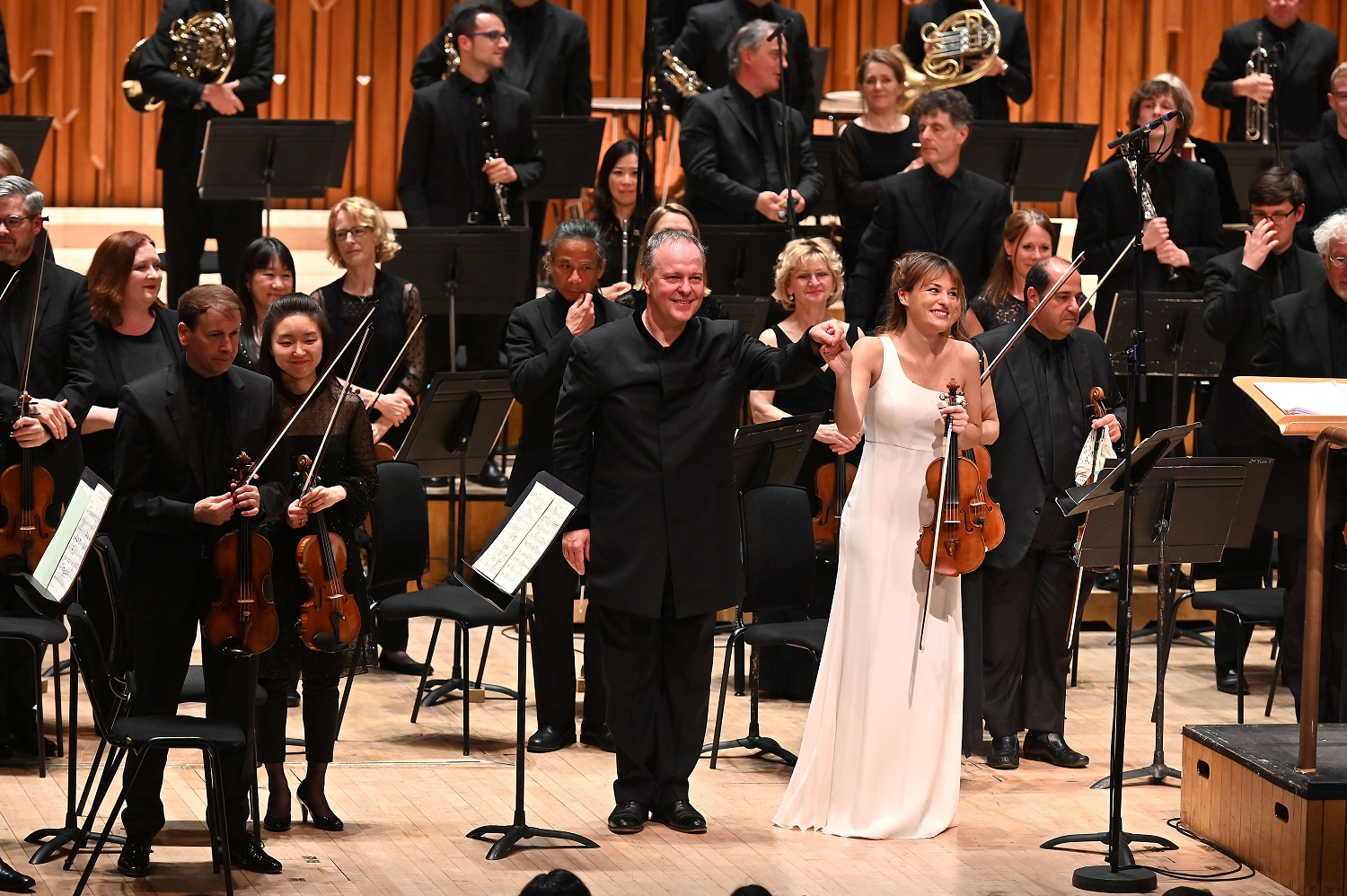Among the greatest violin concertos in the repertoire, the Elgar is far too rarely performed. One of the reasons is its huge dramatic scale and almost hour-long duration – Sakari Oramo wisely programmed it here with Dvořák’s relatively modest Seventh Symphony, but this was still a long concert. Another reason is the superhuman demands it makes on the soloist, of virtuosity, but also of subtle structural thinking, and ultimately, of sheer stamina.
So we owe Nicola Benedetti a debt of thanks for her advocacy here of (arguably) Elgar’s greatest work. Her reading was bold and forthright, but expressive too; not faultless, but certainly accommodating the work’s technical demands. She had some distinctive ideas about the concerto, and brought to light many aspects of the solo part that can otherwise be subsumed in the sheer welter of notes.
Benedetti has only recently taken up the Elgar Concerto, and her performance here suggested an interpretation gradually approaching maturity. She brought the music onto the stage, but hardly looked at it, so it may have been just for confidence. She has previously championed the Szymanowski concertos, where her rich viola-like tone serves the lower passages well. Elgar, too, writes much of his concerto for the lower end of the instrument, and Benedetti is always able to produce a rich but well-projected tone that fully justifies that focus on the lower strings.
Things got off to a shaky start, both from the orchestra and from Benedetti herself. The concerto opens with a long orchestral exposition. Oramo is a seasoned Elgarian, so it was surprising to hear him push the music forward in long, unvaried paragraphs, with little nuance or poise. Benedetti also took a few minutes to get into her stride, with some intonation slips and scratchy bowing. But she clearly has the measure of this huge first movement, and when she settled into the music, she was able convey its breadth and scale. The sheer weight of the music sometimes challenged her tone control, and Oramo made little effort to balance the orchestra – she just had to compete. The Andante second movement was delivered in a suitably lyrical mode, though Benedetti’s vibrato seemed too heavy and unvaried. Some daring portamento slides came off better, expertly judged to lead the ear. The ending of this movement was perfect – Benedetti now adopting a narrow, straight tone in the upper register, and with the orchestral strings perfectly balanced beneath her, a moment of exquisite beauty.
Dvořák’s Seventh can sound similarly driven, the first movement in particular of almost Beethovenian intensity under some conductors. But Oramo took a different approach, emphasising the music’s pastoral character wherever possible, with the tumultuous climaxes standing out as exceptions to the rule. The quiet opening was delivered in a magically serene mood, which persisted, even as the music grew. Oramo’s only major intervention was to hold back before each return of the opening cello theme.
The programme announced that the slow second movement would include 40 bars that Dvořák had cut from the first publication, now restored in a new 2013 edition. This seemed to be a passage, near the start, which develops the main theme through a series of duets around the woodwinds and solo horn. It’s a rambling movement, and the composer may have been right to make the cut, but it was all played with such elegance here, especially from the rustic-sounding woodwind soloists, that the extension was most welcome.
The Scherzo brought some much-needed rhythmic impetus to this otherwise pastoral reading. Timpanist Antoine Bedewi was the star here, bringing focus and drive to the music, his hard attacks followed in kind by the woodwind and brass. Oramo ran the last two movements together, a smart move that allowed the momentum of the Scherzo to energise the slightly baggy finale. He and the orchestra managed to maintain that propulsive mood right up to the coda, where some enthusiastic but (mostly) controlled brass playing brought the symphony to a triumphant conclusion. The slightly flaccid earlier movements apart, this was a satisfying and distinctive reading of Dvořák’s Seventh, but the Elgar was definitely the main course here.













Add comment